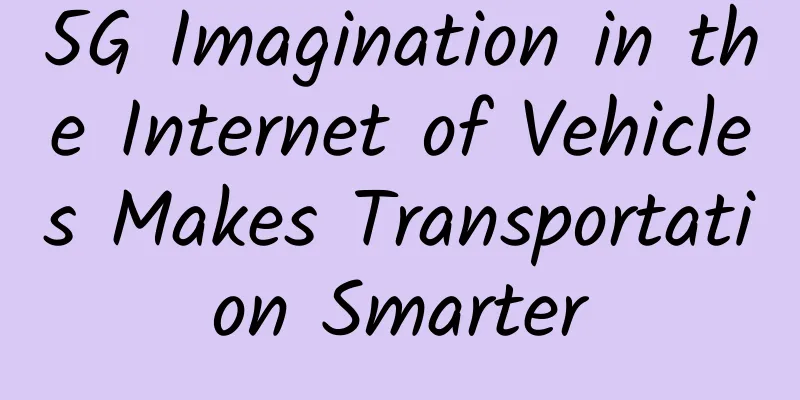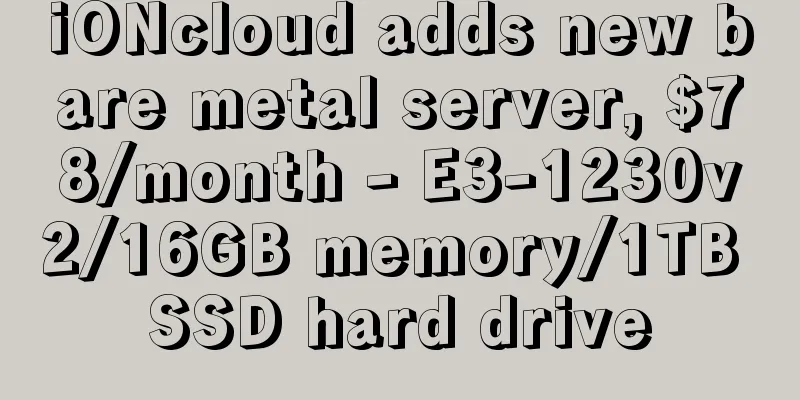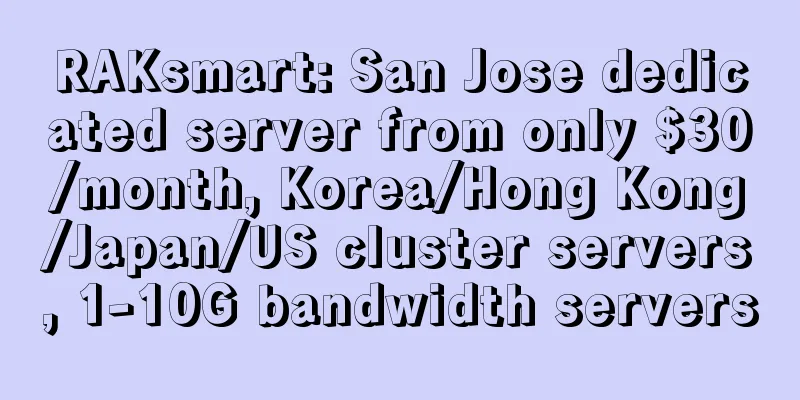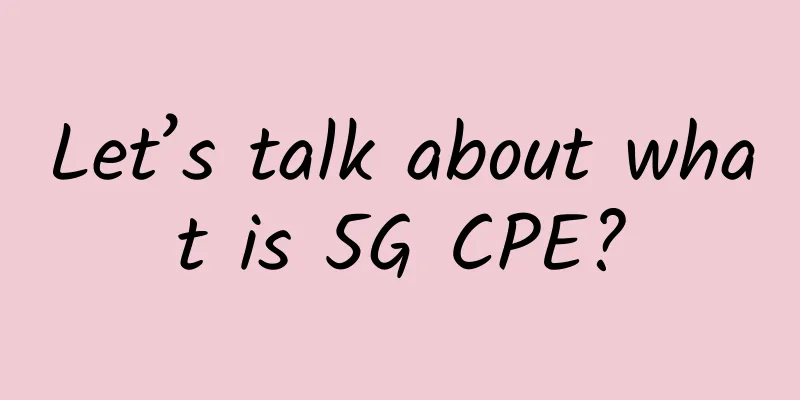Blockchain development faces four major "pain points"
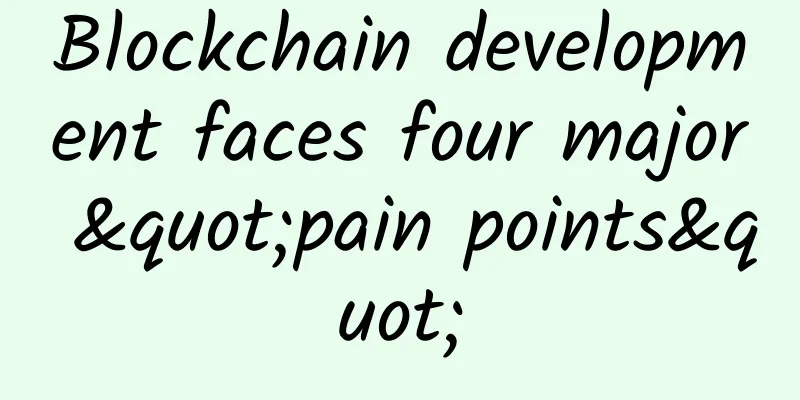
|
Not long ago, the central bank and seven other ministries announced a halt to ICOs. Although this policy is mainly aimed at virtual currencies represented by Bitcoin, blockchain, the underlying technology of Bitcoin, has also been questioned to a certain extent and has been forced to take the blame. As a hot technology that has attracted much attention in recent years, blockchain is booming around the world. Thanks to its decentralization and immutability, blockchain technology is gaining favor in more and more industries, and is being applied to finance, law, logistics and even art. However, it should be noted that there are still some problems in the development of blockchain. Inconsistent standards, chaotic derivative markets, security threats and difficulty in supervision have become the four major "pain points" that affect the healthy development of the blockchain industry, and are issues that the industry needs to focus on and solve.
Blockchain Today As a new thing, the concept of blockchain is the first thing that needs to be explained. From a technical point of view, blockchain is a set of technical systems rather than a single technology. The basic purpose of using blockchain is to achieve reliable data record synchronization in a trustless environment. Due to the lack of mutual trust between the parties involved in data recording, it is not possible to simply obtain data from a unified data source, so a series of technical means are needed to ensure the consistency of data. Blockchain technology is a general term for a large class of technologies that can meet this demand. Strictly speaking, blockchain uses blocks as data containers, and puts new data into blocks for packaging and recording at regular intervals. Each piece of data and each block needs to reach a consensus among the parties involved in the record. Each block stores the hash value of the block generated in the previous time period, and is linked to the previous block through a hash algorithm. All blocks are connected together to form a chain. This technology is figuratively called "blockchain". In a broad sense, distributed ledger technology can be regarded as blockchain technology, a technology or a combination of technologies. Even if it does not use this block to package data and connect all blocks in a chain using a hash algorithm, as long as it can achieve consensus on data among multiple parties and store data among all participants, it can be called a generalized blockchain technology. Ripple is a typical blockchain technology without block and chain data structure. In order to achieve the above requirements, blockchain uses a variety of technologies such as passwords and encryption, P2P networks, and consensus algorithms, and integrates these technologies into a complete technical system through sophisticated design, achieving a clear technical goal. Blockchain is not only an information technology, but also a new business model and a new business mindset. From a technical perspective, blockchain is very much like an immutable distributed database. However, from a business perspective, it is precisely because of its immutability and mandatory execution that the impact of blockchain technology on business far exceeds that of database technology: blockchain has penetrated deep into the business, while database is just a tool for business. The value of blockchain lies in the fact that no center can control this system, and once data is generated, it cannot be changed, which creates a strong trust. On the basis of this trust, we can build a new business model. From a technical perspective, blockchain applications can be divided into the following four types: first, accounting applications that adopt the ledger model, including systems such as digital asset transactions, various tokens, points, and electronic invoices; second, evidence storage applications that adopt the storage model, including systems such as various information rights confirmation and traceability systems; third, general systems in the platform model, including various smart contract basic chains, BaaS blockchain general cloud, etc.; fourth, other model applications, whose main feature is that their business model only requires a certain feature of the blockchain system, such as an Internet advertising system that utilizes the blockchain's P2P broadcasting capabilities, and a data storage system that utilizes the blockchain's encryption capabilities. The development of the blockchain industry currently shows two major trends: first, blockchain technology is accelerating its penetration from the financial industry to non-financial industry applications; second, alliance chain systems with node licensing mechanisms and relatively complex system architectures are gradually becoming the mainstream of industry applications. Four major problems that need to be solved The blockchain industry is in a period of rapid development. In the stage of rapid development of technology and industry, many problems have also emerged. Some of these problems will have a very adverse impact on the development of the blockchain industry. 1. No unified standards have been established What exactly is blockchain? Currently, the industry does not have a unified, clear and definite concept. Without a clear and unified definition of the concept, and without an authoritative organization to evaluate blockchain products, it is very easy to cause problems in the negotiation and implementation of projects involving blockchain, let alone the large-scale promotion and application of blockchain. The existing blockchain applications on the market are also "a mixed bag", and it is impossible to effectively evaluate the product quality. Blockchain urgently needs to establish a set of unified standards and specifications to define its connotation and extension, and explain the evaluation method, so as to guide the healthy development of the market. However, blockchain technology is still innovating and changing, and application scenarios are still being explored. Premature standardization will limit the innovation of blockchain technology and the development of the industry. Therefore, in order to adapt to the current development stage of the blockchain industry, blockchain standardization work should start from the perspective of meeting the real needs of users, based on the principle of testing the matching degree of a certain blockchain system to user needs, and carry out "black box" standardization of function and performance testing, rather than standardizing blockchain technology prematurely. 2. Chaos in the derivatives market Blockchain technology, which is at the peak of hype, has not only attracted the attention of the general public, but also been used by criminals to commit fraud. At present, there are a large number of fake digital currencies on the market that are suspected of pyramid schemes, fraud, and illegal fundraising under the banner of digital currency. These fake digital currencies use portal websites, Weibo, WeChat public accounts, Tieba and other channels for publicity and investment promotion. Some fake digital currencies are even traded and hyped on virtual currency trading platforms. In addition to causing economic losses to the majority of investors, these fake digital currencies have also made blockchain technology bear the blame for no reason, hindering the normal and orderly development of the blockchain industry. On September 4 this year, the People's Bank of China, the Central Cyberspace Affairs Commission, the Ministry of Industry and Information Technology, the State Administration for Industry and Commerce, the China Banking Regulatory Commission, the China Securities Regulatory Commission and the China Insurance Regulatory Commission jointly issued the "Notice on Preventing the Risks of Token Issuance and Financing", which clearly defined the token issuance and financing activities as "essentially an act of illegal public financing without approval". On October 5, the General Office of the State Council issued guidance on promoting supply chain innovation and application, which mentioned the research and use of emerging technologies such as blockchain and artificial intelligence to establish a credit evaluation mechanism based on the supply chain. A series of policies from relevant government departments have distinguished blockchain technology from financial activities in a timely manner, allowing people to fully realize the difference between blockchain technology and tokens, and clarifying the direction for the development of blockchain technology. 3. Safety cannot be ignored As a large amount of capital has entered the blockchain industry, blockchain technology has developed rapidly in recent years. While the technology is developing rapidly, the security issues of the technology have not received corresponding attention. In principle, blockchain technology has high security and reliability, but in engineering implementation and practical application, it may not achieve the expected results. For example, in the accounting blockchain system of the ledger model, the private key is the only credential of the user's identity. In actual business, especially in business with ordinary consumers, it is necessary to bind the private key to the consumer's social identity, and the blockchain system operator will keep the private key on behalf of the consumer. In this case, the security issue of key management has become a very important issue for the entire business model. This security issue cannot be solved by blockchain technology itself, but needs to be solved outside the blockchain system. 4. Unprecedented difficulty in regulation Blockchain technology adopts a "decentralized" technical design, which avoids many problems in the traditional centralized economic system structure, but decentralization also means that the subject is unclear and it is difficult for supervision to effectively control the subject. In the ransomware incident that swept the world on May 12 this year, criminals used Bitcoin as a transaction ransom, making it particularly difficult to track down their identities. However, it is precisely because of the characteristics of blockchain such as message synchronization, easy access, and shared ledgers that regulators can access the network as a node to obtain the most complete and timely regulatory data, avoiding the problem of data falsification in traditional regulatory methods. Therefore, the government's supervision of blockchain applications is likely not to adopt the traditional administrative order method, but to allow the regulators themselves to participate in the system. The correct application of blockchain technology can enhance the government's regulatory power. In particular, the use of smart contracts for compliance reviews can rely on the openness, transparency and automated operation of the blockchain itself, effectively reduce the cost of audits, and significantly reduce the demand and scope of supervision. In order to accelerate the healthy development of my country's blockchain industry and enable my country to take a leading position in the global blockchain technology arms race, relevant government departments should carry out the following four tasks as soon as possible: first, steadily advance the construction of a blockchain standardization testing system; second, encourage the development of open source blockchain technology; third, carry out effective blockchain talent training; and fourth, strengthen blockchain supervision and security technology research and practice. |
<<: Have you already moved to SDN network?
>>: SDN changes the development path of router technology
Recommend
How can operators play the 5G messaging card well?
5G is a technology that can rewrite the "rul...
VMISS adds Los Angeles CN2 GIA line VPS with 20% discount starting from 4.8 CAD/month
VMISS has recently added a VPS host on the CN2 GI...
Seamless broadband experience: Unleashing the power of network services and infrastructure
Importance of Network Services Network services p...
1Gbps ultra-high-speed broadband will be available in some cities next year
On December 26, the National Industrial and Infor...
How to determine whether the protocol is Websocket in Http Header
[[398343]] This article is reprinted from the WeC...
Top 10 technology trends governments should watch in 2021
[[391593]] The pandemic has forced government age...
Tencent Cloud offers a 40% discount on domain name renewals, com renewals for 39 yuan, cn renewals for 21 yuan
Friends who have domain names in Tencent Cloud ca...
In the next generation technological revolution, the Internet of Things, who will play the role of “vanguard”?
The Internet of Things (IoT) is widely regarded b...
Ruijie SDN Open Network Platform ONP won the "2016 Most Innovative Award"
Recently, the results of the "China Enterpri...
5G+AR ushering in a new "blue ocean"
[[408334]] In recent years, the development of te...
Content Delivery Network (CDN) System Design
A CDN is a group of geographically distributed pr...
CloudCone 6th Anniversary Promotion Starting from $21.21/year, 1GB/30G SSD/1TB/Los Angeles Data Center
CloudCone started its 6th anniversary promotion i...
Ruijie Networks releases simplified Ethernet all-optical 3.X solution, Ethernet color optical leads the innovation of campus all-optical network
On the afternoon of April 25, Ruijie Networks hel...
Hard-core dry goods: HTTP timeout, repeated requests must see the pitfalls and solutions
[[351757]] 1 Timeout, unavoidable pain HTTP call ...
Is it a major setback or a cold shower? What happened to 5G?
Because South Korea postponed the commercializati...

